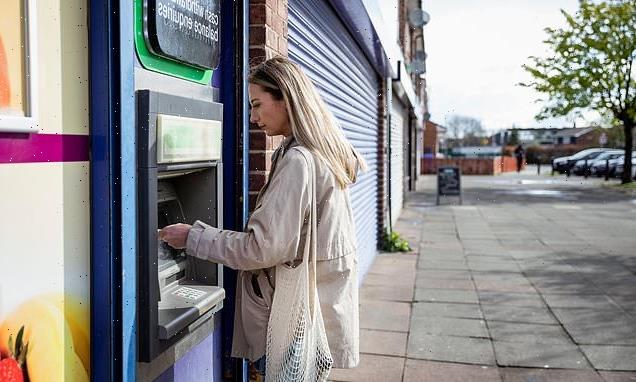One in five forced into hour-long trip to visit local bank
One in five bank customers is forced to make an hour-long round trip to visit their nearest branch as users including the elderly and vulnerable face increasingly long journeys, data reveals
- In the past eight years the number of bank branches has more than halved
- Some people face a gruelling round trip of more than three hours, poll found
One in five customers are now forced to make a round trip of more than an hour to visit their nearest bank branch, data reveals.
As outlets continue to close at an alarming rate, many users – especially the elderly and the vulnerable – face increasingly long journeys to access basic banking services.
Almost a quarter of those living in Northern Ireland have to travel more than an hour to visit their nearest branch, while 23.9 per cent in the East Midlands face a similar journey.
Some face a gruelling round trip of more than three hours to visit their nearest branch, a poll of 2,000 people carried out by Newcastle Building Society showed.
Residents in Yorkshire and the Humber, Scotland and the North West spend the most time travelling to access services – typically facing a journey of 29 minutes.
One in five customers are now forced to make a round trip of more than an hour to visit their nearest bank branch (file image)
In the past eight years, the number of bank branches has more than halved.
Many towns and villages no longer have a single one remaining, leaving communities without access to cash and the elderly and vulnerable without a financial lifeline.
Since 2015, banks and building societies have axed 5,201 sites – 53 per cent of all branches, analysis from the consumer rights group Which? shows.
So far this year, 263 branches have closed or are slated for closure, leaving households with no choice but to make hour-long journeys for simple tasks such as cashing in a cheque or speaking to a staff member in person.
Michael Conville, acting chief customer officer at Newcastle Building Society, said: ‘The stark reality is that as branch closing increases, a growing proportion have to travel longer distances, at increasing expense, to reach their local financial services and access cash.
‘This rise in branch closures is a concern for many as the trend continues across Britain and more communities become cut adrift.’
Almost three times more people now have a digital-only bank account than three years ago as customers are forced to access services online.
About 24 per cent have an account that is managed using online banking or a phone application instead of in branch – up from 9 per cent in 2019, according to a survey by price comparison website Finder.
Some face a gruelling round trip of more than three hours to visit their nearest branch, a poll of 2,000 people carried out by Newcastle Building Society showed (file image)
More than half of those aged over 74 said not having access to a bank branch was the main reason they had moved to digital-only banking.
It recently emerged that Rutland will soon become the first county in England to not have a single bank branch, when HSBC closes its Oakham outlet in June.
With the closure of high street bank branches, people are more reliant on taking out cash from ATMs – but these are also closing at an alarming rate.
Almost a quarter of free-to-use ATMs – more than 12,000 – have been removed since 2018, research by Which? has found.
Rural areas are worst hit as they tend to have a higher proportion of elderly residents, who are sometimes reluctant to use internet banking and payment by card.
Source: Read Full Article



